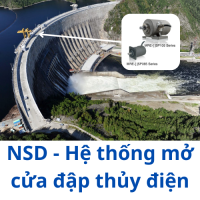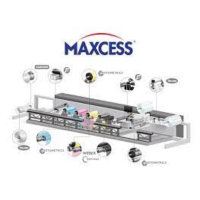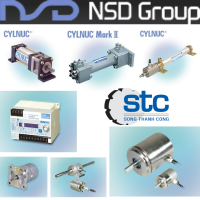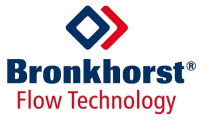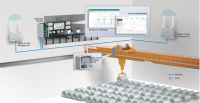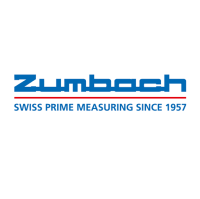Continuous Mercury Monitoring system (CMM)
The Gasmet CMM mercury monitoring system can measure the lowest concentrations of total mercury in samples containing high amounts of dust and gases such as SO2, which traditionally have complicated mercury measurement in e.g. installations such as coal fired power plants stations and power plants co-incinerating refuse derived fuels. Cold Vapor Atomic Fluoresence (CVAF) offers detection of nanograms of Mercury in a cubic metre (ng/Nm3), which allows effetive sample dilution. The potentially interfering SO2 absorption is completely avoided by the technique.
A specially designed sampling system and sample dilution with nitrogen generated in the CMM cabinet ensure short response times and low memory effects for mercury. Conversion of all Mercury species (HgCl2 etc.) into atomic Mercury takes place just before the measuring cell, ensuring that the total mercury concentration is always measured accurately and reliably. The system calibrates itself automatically with nitrogen, mercury vapor and optionally also mercury chloride solution in order to comply with both European and US regulations.
SYSTEM PARTS
-
Dilution probe: The Gasmet™ CMM features a dilution sample probe for sampling of the stack gas. Also included are instrument air backflush and calibration gas inlet. Controller for the sample probe is fitted inside the analyzer cabinet for easy access. As an option, the sample probe can be fitted with an inertial filter.

-
Mercury Analyzer: The analyzer unit is based on the CVAF principle. Fluorescence of atomic mercury in the sample gas is measured at 254 nm (in the ultraviolet region of light). Ionic species of mercury are converter to elemental mercury with a built-in thermal converter. Build-in control panel PC enables fully automatic system control. For more information please refer to CVAF Technology.

-
Gasmet MAUI software: Possibility to control of the CMM system also remotely.

- Calibration unit: The calibration unit prepares both Hgo and HgCl2 test gas. The calibration gas can be introduced to the sample probe before the particle fi lter, as required by the performance criteria. There is no need to use expensive calibration or dilution gases with the Gasmet™ CMM – regular instrument air is sufficient.

KEY ADVANTAGES
- Very low detection limit with CVAF technique (ng/Nm3)
- No need for separate chemicals, gold amalgamation concentrators, acid scrubbers, or additional gases
- Specific for mercury - Virtually no interference from other gases such as SO2, HCl
- Direct sampling with sample dilution and effective filter blowback system – simple probe design
- Simple and reliable system with low need for maintenance
AREAS OF APPLICATION
Coal fired power plants
- Monitors the mass emission of mercury per amount of energy produced (mg/BTU)
- Measures low µg/Nm3 concentrations of mercury in moderate to high SO2matrix
Waste incinerators (Hazardous and municipal waste)
- Monitoring mercury emissions from 0 - 15 µg/Nm3
- Compliant with EU Integrated Emissions Directive and quality assurance standard EN 14884
Industrial processes with mercury in process and flue gases
- Applicable to a wide variety of industries such as mining, metal refining and sulphuric acid production
- Managing mercury as an impurity arising from raw materials
Technical Data
| General parameters | |
|---|---|
| Measuring principle: | Cold vapour atomic fluorescence (CVAF) with extractive filtration, dilution, and thermal conversion |
| Performance: | Minimum range 0 – 10 µg/m3, tested range up to 0 – 1000 µg/m3. Minimum detection limit for total mercury 0.02 µg/m3 (complete system, with dilution) |
| Operating temperature: | 5 – 40 °C, non-condensing, dust free ambient air |
| Storage temperature: | -20 – 60 °C, non-condensing |
| Response time, T90: | Typically < 120 s, depending on the sample line length and measurement time |
| Power supply: | 100 – 115 or 230 V / 50 – 60 Hz |
| Spectrometer with integrated thermal converter | |
|---|---|
| Operation principle: | Direct cold vapour atomic fluorescence (CVAF) in vacuum pressure |
| Detector: | Photon detection unit with photon counting |
| Source: | Low pressure mercury vapour lamp |
| Operation wavelength: | 253.7 nm |
| Sample conversion: | Integrated high temperature thermal converter |
| Calibrator for Hg0 and/or HgCl2 | |
|---|---|
| Operation principle (Hg0): | Vapour generation from saturated source and dilution |
| Operation principle (HgCl2): |
HgCl2 solution dosing and evaporation |
| Calibration gas: | Dried, and Hg scrubbed instrument air |
| Dilution gas flow control: | MFC 0 – 30 l/min |
| Span gas flow control: | MFC 0 – 30 ml/min |
| Hg source temperature: | 0 – 15 °C |
| Calibration concentration ranges converted to Hg0: | |
| Saturated Hg source: | 1 – 200 µg/m3 |
| HgCl2 solution dosing: | 1 – 1000 µg/m3 |
| Measurement parameters | |
|---|---|
| Zero point calibration: | 24 hours |
| Span calibration: | 24 hours |
| Calibration linearity test: | 1 week |
| Zero point drift: | < 2% of measuring range per calibration interval |
| Sensitivity drift: | < 2% of measuring range per calibration interval |
| Linearity deviation: | < 2% of measuring range |
| Temperature drifts: | < 2% of measuring range |
| Instrument air preparation | |
|---|---|
| Instrument air inlet: | 6 – 10 bar, 80 l/min, 8 mm Swagelok fittings |
| Instrument air filtration: | 3-stage filter unit |
| Nitrogen generator: | Capacity 99 % N2, 8 l/min, 5-6 bars, efficiency ratio 20 % |
| Calibration gas drying: | Absorption dryer, capacity -30 °C |
| Mercury scrubber: | Absorption scrubber |
| Vacuum pump: | WOB-L Piston twin headed |
| Alarm outputs | |
|---|---|
| System alarm: | Gasmet CVAF mercury analyzer and application software |
| Service request | Gasmet CVAF mercury analyzer and application software |
| Maintenance status: | Gasmet CVAF mercury analyzer and application software |
| Result valid: | Gasmet CVAF mercury analyzer and application software |
| Concentration alarm: | Gasmet CVAF mercury analyzer and application software |
| Air conditioning | |
|---|---|
| Cooling capacity: | A35 °C / A35 °C 1500 W |
| Internal circulation: | 500 m3/h |
| Dilution probe | |
|---|---|
| Operating principle: | Ejector with critical orifice |
| Material: | SS 316, glass coated sample wetted parts |
| Operating temperature: | Maximum 250 °C |
| Filter element: | Glass coated SS 316, 2 µm |
| Dust load: | < 2 g/m3 |
| Heated probe tube | |
|---|---|
| Material: | SS 316, glass coated sample wetted parts |
| Temperature: | Maximum 250 °C |
| Length: | 122 cm |
| Other materials, lengths, and temperatures are available on request. | |
| Heated line | |
|---|---|
| Tube size: | 2 * 6/8 mm |
| Core material: | PFA Teflon core |
| Temperature: | Maximum 200 °C |
| Fittings: | 8 mm Swagelok |
| Power supply: | 230 VAC or 115 VAC |
| Power density: | 200 watts/meter |
| The maximum length for the heated line is 30 m with 230 VAC and 15 m with 115 VAC power supply. Analyzer and calibrator are connected to dilution probe with combined heated line which divides into two parts on both ends. There are also 2 unheated 4/6 mm lines for dilution and blowback gases. | |
| Electrical connections | |
|---|---|
| Main supply: | 3 * 16 A |
| Power consumption: | ~ 6 kW (the full CMM with heated lines, 20 m) |
| Measuring data outputs | |
|---|---|
| Gasmet measuring system is equipped with analog output representing the result total Hg concentration. | |
| Analog output range: | 4 – 20 mA |
| Enclosure | |
|---|---|
| Material: | Bake painted steel |
| Dimensions (mm): | 2030 * 600 * 600 (cooling unit on top) |
| Weight: | ~ 500 kg (full system) |
| Protection: | Cabinet IP 54, air conditioning unit IP 34 |
Gasmet Technologies Oy shall not be liable for technical or editorial errors or omissions contained herein. The information in this document is provided “as is” without warranty of any kind and is subject to change without notice. Should you find any errors, we would appreciate if you notified us.








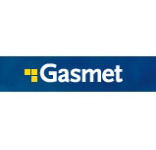
 Mr Tú
Mr Tú
